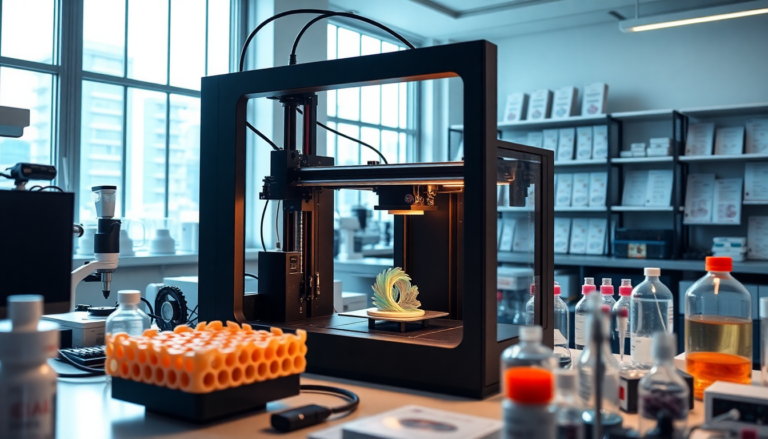Argomenti trattati
Imagine a world where organ failure can be treated with a simple print command. Exciting developments in the field of organ transplantation are bringing us closer to that reality, thanks to innovative advances in 3D printing technology. Researchers at the University of Hong Kong are leading the charge, exploring groundbreaking methods to 3D print functional organ tissue. This novel approach could fundamentally change our understanding of organ donation and transplantation as we know it.
Understanding the Technology Behind 3D Printed Organs
3D printing isn’t just a buzzword; it’s a technology that has already disrupted industries from manufacturing to art. However, its application in medicine is particularly fascinating. At the forefront of this exciting venture is Professor Michael Chan and his dedicated team. They’ve developed an intricate system that combines 3D printed biomaterials with lab-grown cells. The goal? To improve the compatibility of replacement tissues, significantly lowering the risk of rejection by the recipient’s body.
Professor Chan notes that while the idea of using biomaterials isn’t new, the real challenge lies in ensuring these materials can perform the specific functions that the organ they’re meant to replace requires. Their innovative strategy incorporates organoids—tiny versions of organs made from the patient’s own stem cells—into the printed structure. This not only guarantees the organ’s functional capacity but also ensures genetic compatibility, a crucial factor for successful transplantation.
The journey begins with a straightforward oral swab, which yields enough stem cell material to cultivate these organoids. Yet, the researchers face a significant challenge: effectively integrating these organoids into the 3D printed tissues, especially when creating airways that could be used for pre-testing medication allergies in patients. Isn’t it fascinating how something as simple as a swab can lead us to such complex solutions?
The Role of C2iTech in Advancing Research
Boosting this innovative research is C2iTech, a company spun off from the University of Hong Kong. They specialize in cultivating organoids, allowing scientists to focus more on their research without the hassle of sourcing external cultivation services. By streamlining this crucial aspect, the team can dedicate more resources to refining their technology and enhancing the practical applications of their findings.
Currently, the focus of their research is on reconstructing airways, which is increasingly vital given the growing number of patients needing such procedures. But the team’s ambitions don’t stop there. They’re eager to explore other anatomical regions, expanding their research scope and potentially paving the way for comprehensive solutions in organ transplantation. Just think about the possibilities—how many lives could be saved with such advancements?
Implications for the Future of Medicine
The potential impact of successful 3D organ printing is staggering. With a rising number of patients on waiting lists for organ transplants, the ability to produce compatible, lab-grown organs could relieve the pressure on donor registries and minimize transplant-related risks. This breakthrough might not only save countless lives but also transform the landscape of medical treatments.
As this technology progresses, it paves the way for new opportunities in regenerative medicine. The idea of 3D printing organs may sound like something out of a science fiction novel, yet every step researchers take today is bringing us closer to a future where organ failure could be addressed with a mere printing process. While we may not be printing fully functional kidneys just yet, the journey toward that goal is well underway, lighting the way for future innovations in healthcare.

